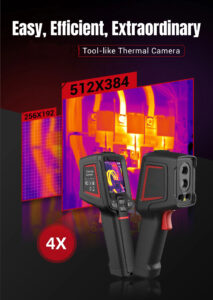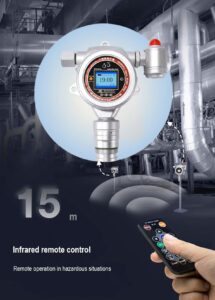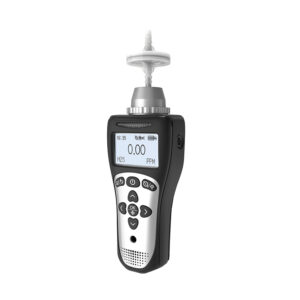The correct installation of combustible gas detectors can not only effectively prevent the occurrence of fire and explosion accidents, but also ensure the safety of people’s lives and property. So, do you know how to install a combustible gas detector correctly?
- Preparations before installation
Understand the characteristics of the gas: Before installation, it is necessary to first understand the characteristics of the gas to be detected, including its specific gravity, diffusibility, toxicity, etc., in order to select the appropriate detector model and installation location.
Select an appropriate location: The combustible gas detector should be installed near areas where gas leakage may occur, but it should be avoided to be directly installed under ventilation openings, fans or near doors and Windows to prevent air flow from affecting the detection effect. Meanwhile, it is necessary to ensure that the installation location is convenient for maintenance and inspection.
Check the environmental conditions: Ensure that the temperature, humidity, electromagnetic interference and other conditions of the installation environment meet the usage requirements of the detector. Avoid installing the detector in environments with high temperature, high humidity or strong electromagnetic interference.
- Installation steps
Fixing the detector: According to the installation method and size of the detector, select appropriate fixing parts (such as screws, bolts, etc.) to firmly fix the detector at the installation position. Make sure the detector is installed stably and will not shift due to vibration or external force.
Connect the power and signal lines: According to the wiring instructions of the detector, correctly connect the power and signal lines. Make sure the polarity of the power cord is correct and the signal lines are firmly and reliably connected. During the connection process, it is necessary to pay attention to avoiding line crossing and interference.
Debugging and calibration: After installation is completed, debug and calibrate the detector. According to the user manual of the detector, set the appropriate detection parameters and alarm thresholds. Calibrate the detector with standard gas to ensure the accuracy and reliability of its test results.
- Testing and acceptance after installation
Functional test: After installation is completed, conduct a functional test on the detector to ensure that it can normally detect gas concentration and issue alarm signals. Tests can be conducted by simulating gas leakage to verify the sensitivity and accuracy of the detector.
Acceptance record: Record the installation process, including the installation location, installation time, commissioning results, etc. Meanwhile, the detector should be inspected and accepted to ensure that it complies with relevant standards and requirements. The acceptance records should be kept for future reference to facilitate subsequent maintenance and repair.
Correct installation of combustible gas detectors is one of the important measures to ensure safety. By following the above installation guidelines and precautions, you can ensure that the combustible gas detector can accurately and reliably detect the gas concentration and issue alarm signals in a timely manner, thereby effectively preventing the occurrence of fire and explosion accidents.






